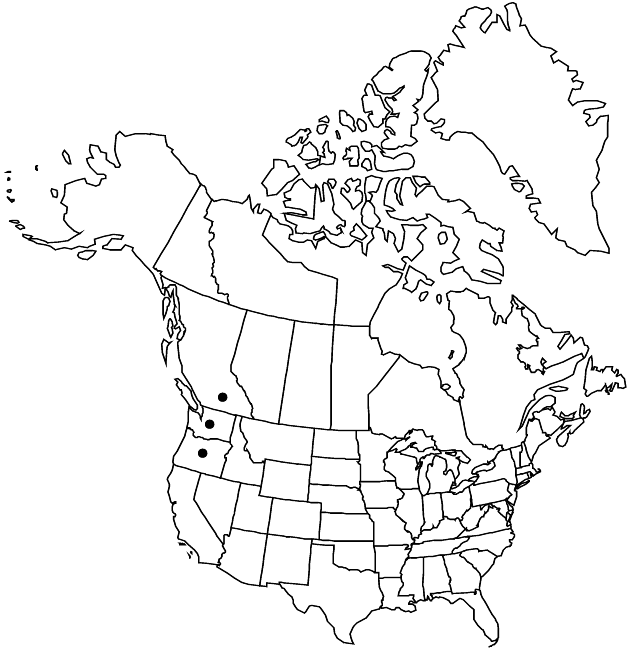Eriophyllum lanatum var. leucophyllum
Prelim. Cat. Fl. Vancouver, 82. 1921.
Perennials (often clumped; roots multi-branched). Proximal leaves (at least on flowering stems) mostly opposite; blades lanceolate to oblanceolate, 1–(2-)pinnately lobed (lobes ± linear), ultimate margins entire or toothed (teeth 1–2), usually strongly revolute (not crispate), abaxial faces usually densely gray-woolly, adaxial glabrate. Heads 2–5 per array or borne singly. Peduncles mostly 3–14 cm. Involucres usually 7–11 mm diam. Ray florets 8–13, sometimes 0; laminae 8–20 mm. Cypselae 2–3(–4) mm; pappi (0.3–)0.5–1(–1.5) mm. 2n = 16, 32.
Phenology: Flowering May–Aug.
Habitat: Moist meadows, dry and rocky coastal or inland sites
Elevation: 0–800 m
Distribution

B.C., Oreg., Wash.
Discussion
Variety leucophyllum intergrades so smoothly with var. achillioides in southern Oregon that placement of some specimens becomes arbitrary. Eastward, variety leucophyllum passes into var. lanatum along the Columbia River near The Dalles. Polyploid populations of var. leucophyllum occur where it abuts vars. achillioides and lanatum (J. S. Mooring 1975, 2001). L. Constance (1937) and A. Cronquist (1955) submerged var. leucophyllum in var. lanatum. Modal populations of the two varieties differ sharply in respect to roots, leaves, and cypselae.
Selected References
None.